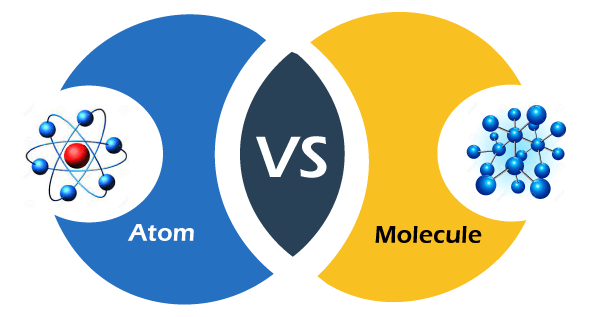DOWNLOAD MOBILE APPLICATION TO LEARN MORE: ATOMS AND MOLECULES CLASS 9 MCQ WITH ANSWERS

POINTS TO REMEMBER
•Law of conservation of mass: It states that matter is neither created nor destroyed or during a chemical reaction, the total mass of the reactants is equal to the total mass of the products.
•Law of constant proportions: It states that in a pure chemical compound, the elements are always present in a definite proportion by mass.
•Dalton’s atomic theory: This theory was put forward by Dalton (1808) to explain the laws of chemical combination
•Explanation of law of conservation of mass by Dalton’s atomic theory: Matter is made up of atoms. Atom can neither be created nor destroyed. Hence, matter can neither be created nor destroyed.
•Explanation of law of constant proportions by Dalton’s atomic theory: The kind and number of atoms in a compound is fixed. As atoms have fixed masses, the law is proved.
•Atom: An atom is the smallest particle of the element that can exist independently and retain all its chemical properties.
DOWNLOAD MOBILE APPLICATION TO LEARN MORE: ATOMS AND MOLECULES CLASS 9 MCQ WITH ANSWERS
•Atomic mass unit (amu) or unified mass (u): It is (1/12) th of the mass of an atom of carbon- 12 isotope.
•Atomic mass: Atomic mass of an element is the average relative mass of an atom as compared with the mass of carbon- 12 isotopes taken as 12 units.
•Molecule: A molecule is the smallest particle of an element or a compound capable of independent existence under ordinary conditions. It shows all the properties of the substance.
•Atomicity: The number of atoms present in one molecule of the substance.
•Molecular mass: It is the average relative mass of the molecule of a substance (element or compound) as compared with that of an atom of carbon- 12 isotope taken as 12.
•Formula unit mass: The formula unit mass of a substance is the sum of the atomic masses of all the atoms present in one formula unit of the compound.
•Ion: An atom or a group of atoms carrying a positive or negative charge is called an ion
•Cations and Anions: The ion carrying positive charge is called ‘cation’ whereas an ion carrying a negative charge is called an ‘anion’.
DOWNLOAD MOBILE APPLICATION TO LEARN MORE: ATOMS AND MOLECULES CLASS 9 MCQ WITH ANSWERS
•Monoatomic and Polyatomic Ions: Ions consisting of only single atoms are called monoatomic whereas ions consisting of group of atoms are called polyatomic.
•Valency: Valency of an element is defined as its combining capacity. It is equal to the number of H-atoms with which one atom of the element combines. In case of ionic compounds, valency is defined as the number of units of charge present on the ion.
•Chemical Formula: A chemical formula of a compound shows its constituent elements and the number of each combining element.
•The chemical formula of a molecular compound is determined by the valency of each element.
•In ionic compounds, the charge on each ion is used to determine the chemical formula of the compound.
•Avogadro’s Constant or Avogadro’s number: The Avogadro’s constant (represented as NO or NA) is defined as the number of atoms in exactly 12g of carbon-12.
Avogadro’s number = 6.022*1023
•Mole: The mole is the amount of substance that contains the same number of particles (atoms/ions/molecules/formula units, etc.) as there are atoms in exactly 12g of carbon-12.
•Mass of 1 mole of a substance is called its molar mass.
•Molar Volume: The volume occupied by one mole of a gas under standard conditions of temperature and pressure is called molar volume. It is equal to 22.4 liters.
MCQs on Atoms and Molecules
DOWNLOAD MOBILE APPLICATION TO LEARN MORE: ATOMS AND MOLECULES CLASS 9 MCQ WITH ANSWERS
Table of Contents
ATOMS AND MOLECULES CLASS 9 MCQ WITH ANSWERS
1.Calculate the relative molecules mass of water. (H2O)
a)15 u
b)18 u
c)17 u
d)19 u
Ans.18 u
2.Calculate the molecular mass of HNO3.
a)61 u
b)63 u
c)65 u
d)67 u
Ans. 63 u
3.Calculate the mass of 0.5 mole of N2 gas
a)12 g
b)18 g
c)16 g
d)14 g
Ans. 14 g
4.Calculate the mass of 0.5 mole of N atoms
a)7 g
b)9 g
c)11 g
d)12 g
Ans. 7 g
5.Hydrogen and oxygen combine in the ratio 1 : 8 by mass to form water. What weight of oxygen gas would be required to react completely with 3 g of hydrogen gas?
a)25 g
b)26 g
c)28 g
d)24 g
Ans. 24 g
DOWNLOAD MOBILE APPLICATION TO LEARN MORE: ATOMS AND MOLECULES CLASS 9 MCQ WITH ANSWERS
6.How many atoms are present in a H2S molecule?
a)3
b)4
c)5
d)6
Ans.3
7.hat is the mass of 1 mole of nitrogen atoms.
a)16 g
b)14 g
c)18 g
d)20 g
Ans. 14 g
8.What is the mass of 0.2 mole of oxygen atoms?
a)3.2 g
b)4.5 g
c)3.1 g
d)2.2 g
Ans. 3.2
9.What is the mass of 0.5 mole of water molecules?
a) 7.0 g
b) 8.0 g
c) 9.0 g
d) 6.0 g
Ans. 9.0 g
10.What is the symbol of cobalt?
a)Co
b)C
c)Al
d)Na
Ans. Co
DOWNLOAD MOBILE APPLICATION TO LEARN MORE: ATOMS AND MOLECULES CLASS 9 MCQ WITH ANSWERS
